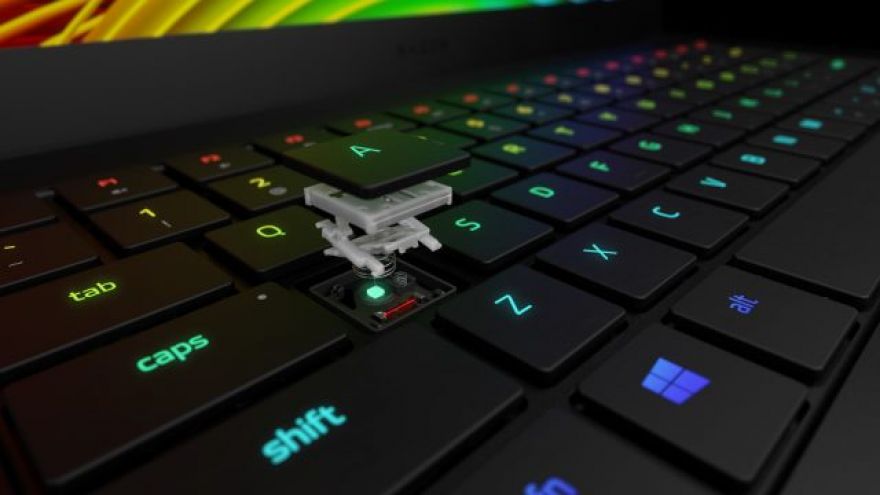
Razer Unveils First Optical Keyboard Switches in a Laptop
Razer made its name creating flashy gaming peripherals like mice, headset, and of course, keyboards. It has since moved into the laptop space with the Blade series of gaming-oriented notebooks. Its previous innovation in laptop keyboards has been mostly limited to equipping them with RGB LEDs, but the new Razer Blade 15 Advanced is the . Razer says these allow for improved responsiveness and typing feel, but you’ll pay handsomely to get them.
The keys on a desktop keyboard have about 4mm of travel, but laptops need to have a much more compact form factor to make them practical to carry around.
Razer has, thankfully, not followed Apple in making laptop keys even lower travel. The new optical switches have even more travel than the company’s traditional laptop keys, and there are fewer moving parts.
The optical switches rely on a beam of infrared light to actuate each press — it’s somewhat similar to gaming keyboards like the Wooting One. The switches fire at 1mm, but the total key travel is 1.7mm. That’s about 50 percent better than Razer’s other laptop keyboards. There’s also a parallel mechanism that produces a satisfying mechanical click, but that doesn’t seem to be at all related to the actual functionality of the switch. Still, this should count as a “mechanical” keyboard because the switches actuate before bottoming out. It also has per-key RGB support.
If you want the fancy new optical keyboard switches, you’ll need to get the “Advanced” version of the Blade 15, and they only come in specific SKUs of that device. Presumably, these new switches will come to other Razer laptop models in the future.
The base model has the standard scissor mechanism in its keyboard, and the LED lighting is limited to a single color. That laptop costs a mere $1,500, but the Advanced model with the optical keys is around $2,650. However, that does include virtually every feature you could want in a gaming laptop, including a Core i7 CPU, an Nvidia RTX 2070, 16GB of RAM, and a 240Hz display.
Now read: